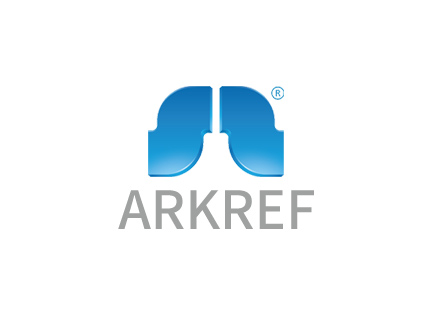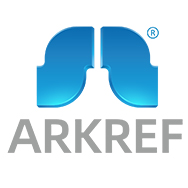Water Chiller Options Compared: What Matters Most
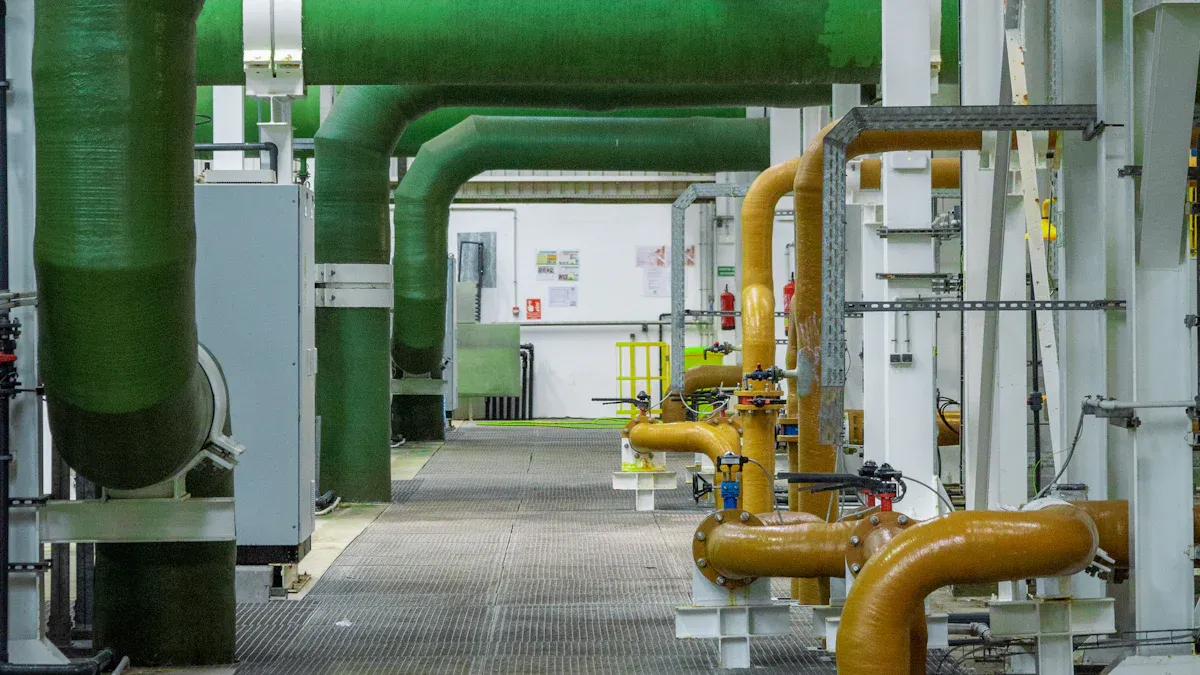
When you pick a water chiller, your cooling needs come first. Every system is unique, so think about your space and water amount. Also, check how well your system keeps things cold. Even small design changes can matter a lot. For example, changing fin thickness and height can help. This makes the chiller work better and cool more. Look at these numbers:
Parameter / Design Choice | Improvement | Impact |
|---|---|---|
Fin thickness (0.1 mm) | Better chiller efficiency | |
PCM temp (12°C) | Cooling power up by 60.9% | Stronger water chiller performance |
PCCESDs integration | 72.75% energy savings | Lower energy use for your requirements |
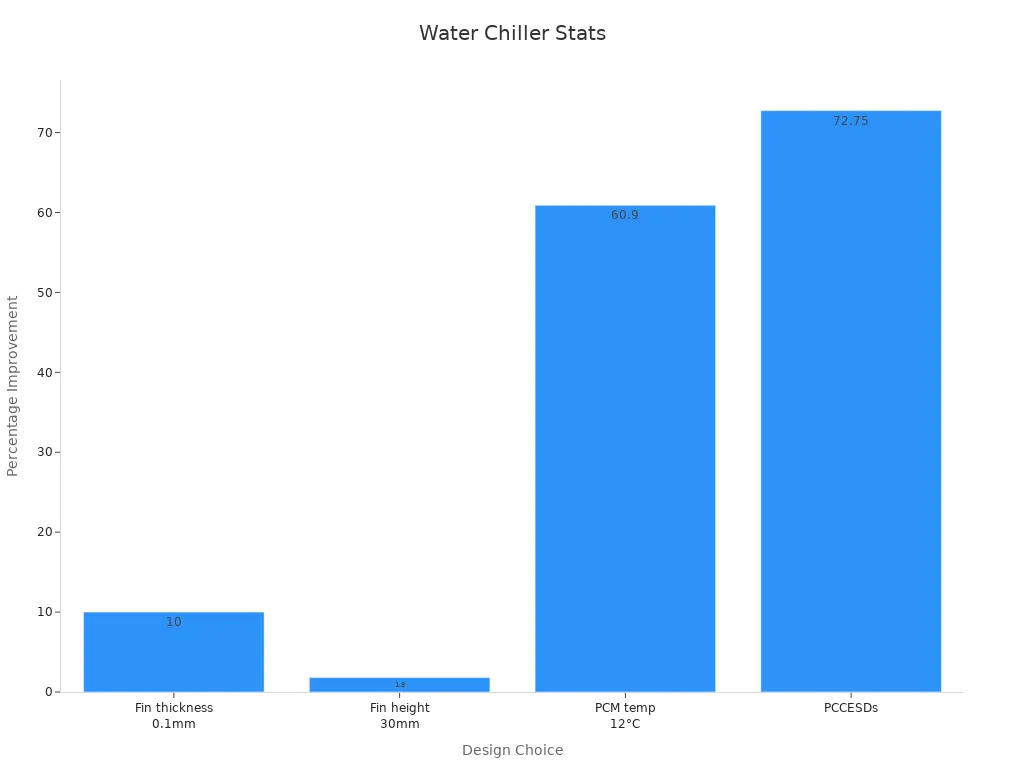
Think about what is most important for you before buying.
Key Takeaways
Figure out your cooling needs by checking heat load. Check water volume and insulation too. This helps you pick the right chiller size and type.
Pick the chiller type that works for your setup. Fan-based chillers are good for small tanks. Compressor chillers give strong cooling. Evaporative chillers work well in dry places and save energy.
Find chillers with smart controls and easy maintenance. These features help save energy and lower repair costs.
Keep your chiller quiet and let air flow around it. Make sure there is space for airflow. Check noise levels before you buy.
Clean and check your chiller’s filters, hoses, and fans often. This helps it work well and last longer.
Cooling Requirements
Choosing the right chiller starts with understanding your cooling requirements. You want your system to keep water at the perfect temperature, no matter what’s happening around it. Let’s break down the main things you need to think about.
Heat Load
Heat load is the total amount of heat your chiller needs to remove from your water. This number depends on several things. You have to look at the room temperature, the heat from lights, and the energy from pumps or other equipment. Each of these adds extra warmth to your water.
To estimate your heat load, you can use data from sensors. These sensors track outside air temperature, water supply and return temperatures, and even the status of your pumps and chiller. When you know these numbers, you can figure out how much heat your system needs to handle. If you have high capacity cooling needs, you’ll want a chiller that can keep up with big changes in temperature.
Tip: If your setup is in a hot room or uses strong lights, your cooling requirements will be higher. Always check your equipment’s heat output before you choose a chiller.
Water Volume
The amount of water in your system matters a lot. More water means your chiller needs to work harder and longer to keep everything cool. If you have a small aquarium, you might get by with a smaller chiller. For large tanks, pools, or industrial systems, you’ll need something with more capacity.
You can use this simple formula to estimate the cooling power you need:
Cooling Capacity (BTU/hr) = Water Volume (gallons) × 8.34 × Temperature Drop (°F)
This formula helps you match your chiller to your water volume and the temperature you want. If you want to lower water temperatures quickly, you’ll need a chiller with more power.
Insulation
Insulation is your secret weapon for better cooling. Good insulation keeps heat out and helps your chiller work less. If your tank or pipes are not insulated, outside heat will sneak in and make your system work harder. That means higher energy bills and more wear on your equipment.
Modern chillers respond quickly to changes in cooling requirements. They keep water temperatures steady, even if the air gets warmer or your equipment runs longer. Closed-loop chiller systems also save water and lower costs compared to open-loop systems. If you use energy-efficient pumps and compressors, you’ll see even more savings.
Note: Raising your coolant supply temperature just a little can cut down on chiller runtime. For example, moving from 10°C to 30°C can make a big difference in energy use, especially in hot climates.
When you look at all these factors—heat load, water volume, and insulation—you get a clear picture of your cooling requirements. This helps you pick a chiller that fits your system and saves you money in the long run.
Chiller Types
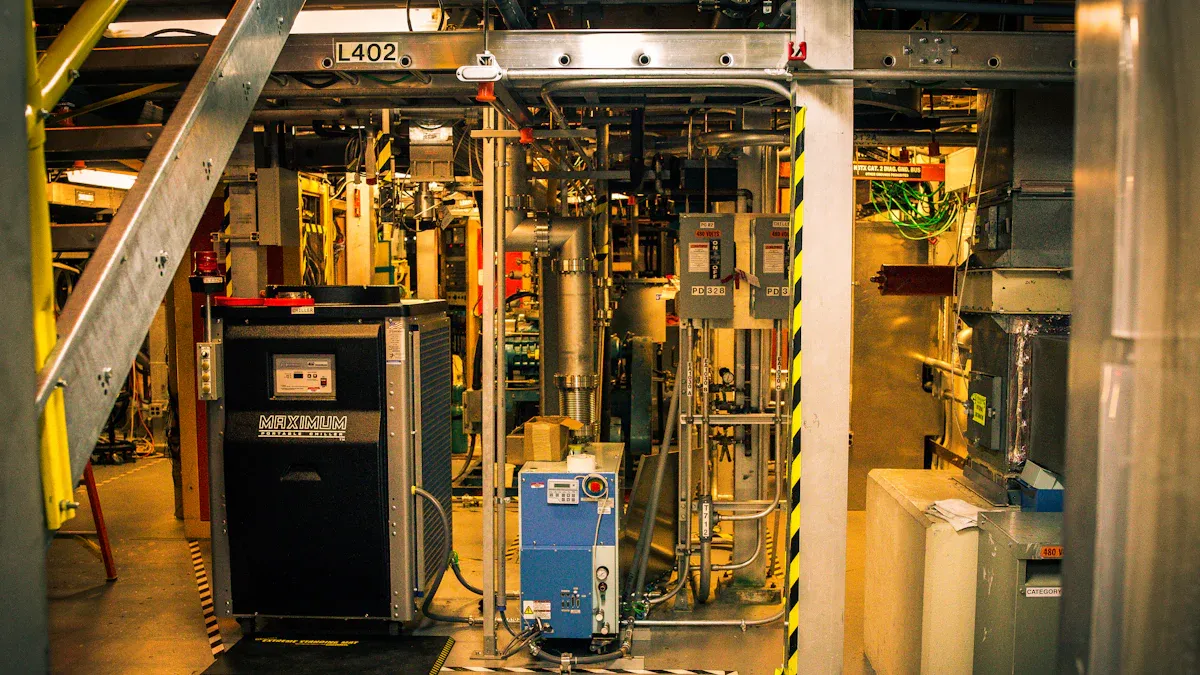
When you need to cool water, you can pick from three main chiller types. Each one works in its own way and is good for different jobs. Let’s look at how each chiller works, what makes it special, and where it works best.
Fan-Based Chillers
Fan-based chillers use fans to blow air over coils with cool water inside. The air takes heat away from the water, making it cooler. These chillers are often used in small aquariums or when you want something cheap and easy.
How do they work?
You set up the chiller so water moves through it. The fan blows air on the coils, and heat leaves the water. This is a simple way to cool water and does not use much power.
What should you know about their performance and reliability?
You can change how much air moves by changing the fan speed or blade angle.
These chillers cool water fast if they have good thermal efficiency.
Some fans are made to be quiet, so noise is not a big problem.
Composite fan blades, like fiberglass aluminum, last longer and keep air moving well.
It is easy to take care of these chillers. Just check the fan, motor, and gearbox.
To make sure the chiller works well, people use FMECA and do regular checks.
A cost-benefit analysis helps you decide if fixing or upgrading is worth it.
Pros:
Cheap to buy
Easy to set up
Simple to take care of
Can be quiet if you pick the right fan
Cons:
Not very strong cooling
Not good for big tanks or lots of heat
May not cool well in hot rooms
Best for:
Small aquariums, hobby tanks, or places where you want a basic water chiller that does not use much energy.
Compressor Chillers
Compressor chillers use a refrigeration cycle, like a fridge at home. They have a compressor, condenser, and evaporator. These chillers pull heat out of water and send it outside. They give strong cooling and keep water at the right temperature.
How do they work?
Water goes through the chiller. The compressor squeezes refrigerant, which takes heat from the water. The heat leaves through the condenser, and the cooled water goes back to your tank or tub.
Why choose a compressor chiller?
These chillers work well even if the room is hot. They can handle big heat loads and lots of water. They keep your water at the right temperature all the time.
Pros:
Very strong cooling
Good for big tanks, pools, or cold plunges
Keeps temperature steady
Modern models save energy
Cons:
Costs more to buy
Needs more space
Harder to install
Needs regular care for the compressor and refrigerant
Best for:
Big aquariums, pools, or any place where you need strong and steady cooling.
Evaporative Coolers
Evaporative coolers use water evaporation to cool air, which then cools your water. These chillers do not use compressors. They use fans and water pumps instead. They save energy and cost less to run.
How do they work?
Warm air goes through wet pads or media. The water evaporates and takes heat from the air. The cooler air then helps drop the water temperature in your system.
Let’s look at some numbers:
Parameter / Aspect | Value / Data | What It Means |
|---|---|---|
Coefficient of Performance (COP) | Very high efficiency, uses less energy than other chillers. | |
Energy Efficiency Ratio (EER) | 90 | Much higher than standard refrigeration chillers. |
Evaporative Media Efficiency | 80% - 90% (up to >90% for commercial media) | Cools air close to the wet-bulb temperature. |
Temperature Drop Example | 42°C to 22.45°C (Las Vegas, 85% efficiency) | Shows strong cooling in dry climates. |
Limitation in Humidity | Only cools to 28.2°C at 85% humidity | Less effective in humid places. |
Installation Cost | About 50% of central refrigerated air | Cheaper to install than compressor chillers. |
Operational Cost | About 1/8 of refrigerated air conditioning | Very low running costs. |
Water Consumption | 420,938 L used in 2002 for two cooling towers | Uses a lot of water, which can be a drawback. |
Power Consumption | Only fans and pumps, no compressor | No big power spikes, saves energy. |
Environmental Impact | No toxic refrigerants | Safer for the environment, no CFCs or ozone issues. |
Pros:
Saves a lot of energy
Cheap to run
Simple design, not many parts
No toxic refrigerants
Cons:
Uses a lot of water
Does not cool well in humid weather
Not good for places with high humidity
Best for:
Dry places, greenhouses, or places where you want to save money on energy and setup.
Tip: If you want to save energy and money, and you live in a dry place, evaporative coolers are a smart pick. For big tanks or lots of heat, compressor chillers are the most reliable. Fan-based chillers are best for small setups and low budgets.
When you compare these chillers, think about your water amount, heat load, and local weather. Each chiller type has its own good points. Pick the one that fits your needs for efficiency, performance, and cost.
Aquarium Chillers
Features
When you look at aquarium chillers, you want to keep your fish and corals happy. These aquarium cooling systems help you control water temperature, which is key for healthy reef tanks. You can find chillers with digital displays, alarms, and easy-to-use controls. Some models let you set the exact temperature you want. This makes temperature control simple.
Many aquarium chillers come with built-in filtration. This keeps your water clean and clear. Some even have UV sterilizers or ozone generators. These features help kill germs and keep your aquarium safe. If you have reef tanks, you know how important clean water is. Good filtration and sanitation protect your fish and corals from disease.
You should also check if the chiller works with your aquarium cooling systems. Some chillers fit right into your tank’s plumbing. Others need extra hoses or pumps. Make sure the chiller matches your tank size and water flow. If you have a large aquarium or several reef tanks, look for a chiller that can handle big systems.
Tip: Always check the chiller’s compatibility with your tank and filtration system before you buy.
Installation
Setting up an aquarium chiller does not have to be hard. First, place the chiller near your tank but leave space for air to move. Most aquarium chillers need a pump to move water through the unit. You connect the inlet and outlet hoses to your tank or sump. Make sure the hoses fit tight so you do not get leaks.
Some aquarium cooling systems come with quick-connect fittings. These make installation faster. If you have reef tanks, you may want to add a pre-filter. This keeps sand and debris out of the chiller. Clean water helps your chiller last longer.
After you set up the chiller, turn it on and watch the water temperatures. Adjust the settings until you get the right temperature for your aquarium. Check the system every week. Clean the filter and look for any blockages. This keeps your aquarium cooling systems running well.
Note: If you are not sure about plumbing or wiring, ask a pro for help. A good setup keeps your tank safe and your fish happy.
Water Chiller Features
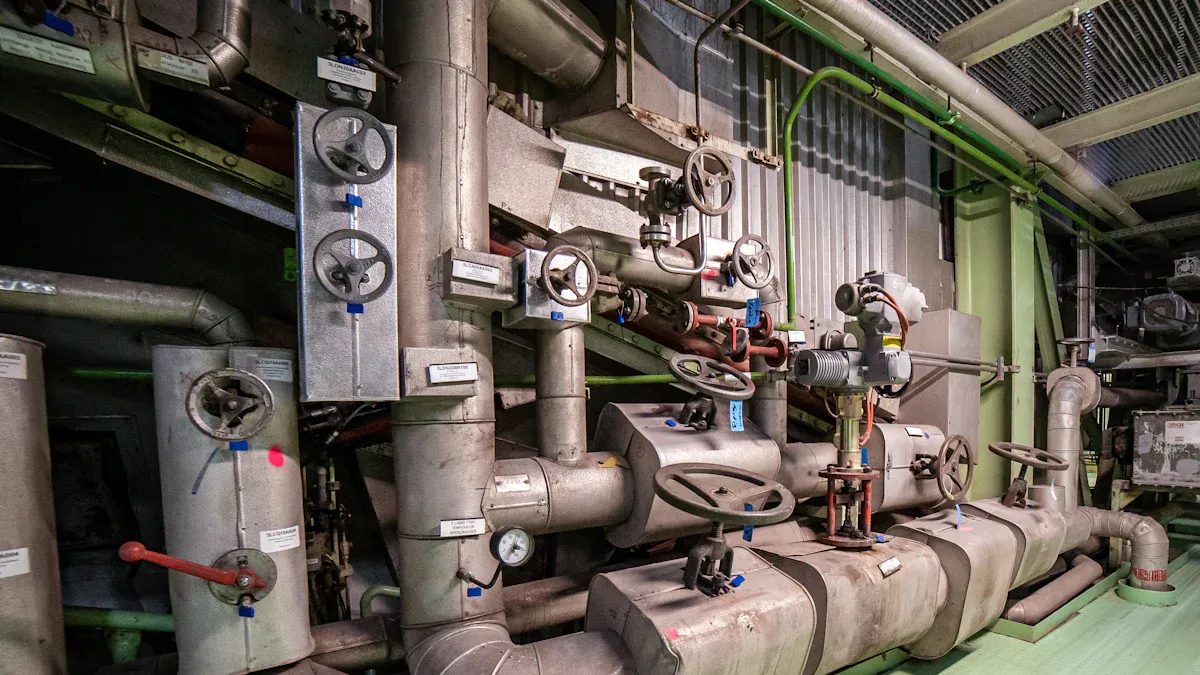
Noise and Ventilation
You want your chiller to be quiet. Some chillers only make a soft sound. Others can be much louder. You can check how loud a chiller is by looking at sones or decibels. Here’s a simple chart:
Measurement Type | Metric/Range | Description/Implication |
|---|---|---|
Noise Level (Sones) | <1.0 sones | Very quiet, good for bedrooms or quiet rooms |
Noise Level (Sones) | 1.0–2.0 sones | Quiet, like a fridge |
Noise Level (Sones) | 2.0–3.0 sones | Moderate, like office noise |
Noise Level (Sones) | >3.0 sones | Loud, like a TV or people talking |
Noise Level (dB) | <50 dB | Low noise, easy to ignore |
Noise Level (dB) | 50–60 dB | Moderate, like a compressor chiller unit |
Noise Level (dB) | >60 dB | High, like industrial chillers |
Ventilation Airflow (CFM) | Varies | More airflow means better cooling and less heat buildup |
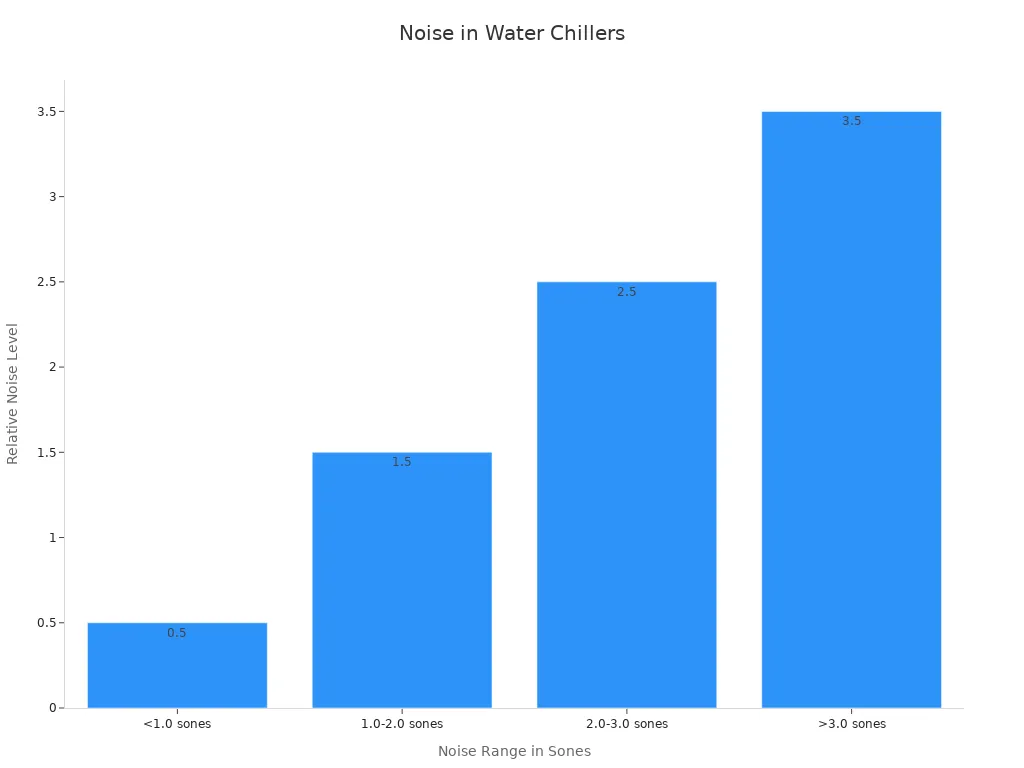
Good airflow helps your chiller stay cool. It also helps it last longer. Leave space around the chiller so air can move. If you put it in a tight spot, heat can build up fast. This makes the chiller work harder. Always check the box for hoses, pumps, and fittings. You need these for setup.
Controls and Connectivity
Modern chillers let you control temperature in many ways. Many have digital screens and easy buttons. Some even have Wi-Fi. You can set the temperature you want. You get alerts if something changes. Some chillers let you use your phone to check or change settings. This makes it easy to keep water at the right temperature.
Tip: Pick chillers with smart controls if you want to save energy and make changes from anywhere.
Maintenance
Taking care of your chiller saves money and energy. Check filters, pumps, and hoses often. Many chillers use smart sensors now. These sensors watch things like power use, fan speed, and temperature. If something is wrong, you get a warning early.
Power Usage Effectiveness (PUE) and Water Usage Effectiveness (WUE) show how much energy and water your chiller uses.
Uptime and availability numbers show if your chiller is reliable.
Resource numbers like fan RPM and thermal headroom help you find problems early.
Some chillers use thermostatic valves to keep water at the right temperature and protect seals. This can cut water use in half and lower costs.
If you want less work, choose a chiller with self-cleaning or auto-shutoff. Always leave space for easy cleaning and repairs when you install your chiller.
Choosing the Right Chiller
Matching to Tank or Tub
You want your aquarium to stay healthy and your fish to thrive. Picking the right chiller starts with matching it to your tank or tub. First, check the size of your aquarium. A small tank needs a different cooling solution than a large one. If you have a cold plunge or a big pool, you need a chiller with more power. Always look at the water volume and the heat your equipment adds. This helps you find a chiller that gives optimal performance.
Think about the type of aquarium you have. Reef tanks, freshwater tanks, and saltwater tanks all have different needs. Some chillers work better with certain systems. Make sure the chiller fits your setup and can handle the water flow. If you have more than one tank, you might need a bigger chiller or even two smaller ones.
Tip: Ask the manufacturer or a local expert for advice. They can help you choose a chiller that matches your tank size and setup for the best performance.
Budget and Efficiency
You want to get the most out of your budget while keeping your aquarium cool. Chiller systems come in many sizes and prices. Some let you start small and add more power as your aquarium grows. This helps you spread out costs and avoid spending too much at once.
To save money, keep your chiller in good shape. Regular maintenance stops big repairs and keeps your costs low. Modern chillers use smart controls to boost efficiency. These controls adjust settings based on the weather and how much you use your aquarium. IoT features can spot problems early, so you fix them before they get expensive.
Here’s a quick table to help you compare:
Feature | How It Helps You Save |
|---|---|
Smart controls | Lower energy use |
Predictive maintenance | Fewer repairs, less waste |
Scalable systems | Grow as your tank grows |
Automated temperature controls and smart algorithms keep your aquarium at the right temperature. This means you use less energy and pay less on your bills. When you pick a water chiller, look for cost efficiency and features that boost efficiency. This way, you get great performance and keep your budget in check.
Choosing the right water chiller comes down to a few key things:
Know your cooling needs and water volume.
Check your space and budget.
Look at insulation, features, and how easy it is to maintain.
Need help? Talk to an expert or your local store. They can help you find the best chiller for your setup. Take your time and pick what works for you!
FAQ
How do I know what size chiller I need?
You need to check your water volume and how much heat your equipment adds. Use the cooling formula in this blog. If you feel unsure, ask a local expert or the chiller manufacturer.
Can I use a water chiller for both aquariums and pools?
You can use some chillers for both, but always check the product details. Pool chillers need more power. Aquarium chillers work best for smaller setups. Pick the right one for your water volume.
How often should I clean my water chiller?
You should check and clean your chiller every month. Look at the filters, hoses, and pumps. Clean out any dirt or buildup. This keeps your chiller running well and helps it last longer.
What should I do if my chiller gets noisy?
If your chiller gets loud, check for dust or blockages around the fan. Make sure nothing blocks the airflow. If the noise stays, call a service pro. A quick fix can save you money later.
See Also
A Complete Guide To How Water Chiller Units Work
How To Choose The Best Industrial Water Chiller Systems
Proven Strategies To Improve Walk-In Chiller Performance
